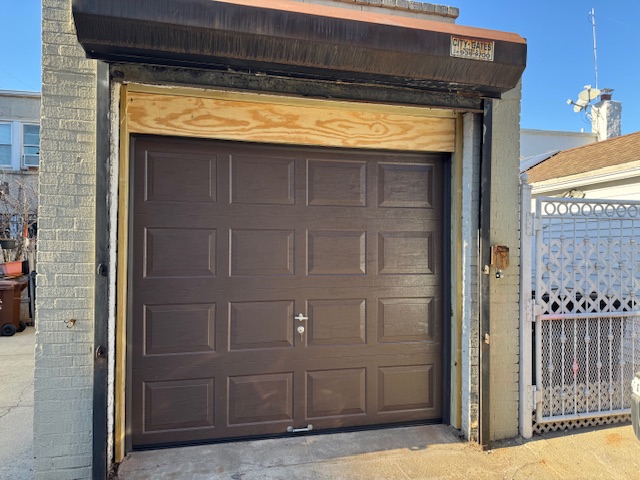Garage doors always seem to give you trouble at the most inconvenient times. Maybe you’re late for work. Maybe the kids are in the car.
Either way, it’s frustrating. And you want answers fast.
The good news? Some of the most common causes for garage door issues are simple and safe to address on your own. And if it is something serious, like a broken spring, you’ll know when it’s time to bring in a pro.
Here’s a step-by-step guide to help you figure out what’s going on and what to do next.
1. Make Sure Your Garage Door is Getting Power
Let’s start with the easy stuff. If the outlet near the opener looks fine, check your circuit breaker panel. A tripped breaker or brief power loss is more common than most people realize and can shut the system down without warning.
If the breaker is tripped, switch it fully off, then back on to reset it. If the opener was unplugged, plug it back in and try the remote again. If the power is on and the door still doesn’t move, it’s time to move to the next step.
2. Check the Remote and Wall Button
Test both the remote control and the wall button inside your garage. If the wall button works but the remote does not, the batteries in the remote are probably dead and just need to be replaced. (Yay! An easy fix.)
If neither works, even though the opener has power, the unit may not be receiving the signal or could have an internal electrical issue. If new batteries do not fix it, move to the next step.
3. Make Sure the Garage Door Isn’t Locked
Many garage doors have a manual lock built into the handle or inside latch. If someone accidentally turns it, the opener can’t lift the door.
Check the inside of the door to make sure the lock bars aren’t in place. If they are, turn the handle or release the lock and try opening the door again.
4. Look at the Safety Sensors
Modern garage doors have safety sensors that sit on either side of the opening, near the floor. They send an invisible beam across the bottom of the opening. If that beam is blocked or the sensors are not aligned, the door won’t move.
(Which is a good thing. This is an important safety feature!)
Make sure nothing is in front of the sensors, then check the lights on each one. Both should be steady and not blinking. If one is dim, flickering, or off completely, gently adjust the sensor until both lights are solid. Then try opening the door again.
5. Check the Door’s Manual Release
If you hear the opener running but the door doesn’t move, the manual release may have been pulled. This is the red cord that disconnects the door from the opener so it can be opened by hand during a power outage.
To re-engage it, make sure the door is fully closed. Then press the wall button or remote. The opener should reconnect to the door automatically. If it doesn’t catch, you may need to pull the release cord toward the door and try again.
6. Try Lifting the Door Manually
With the opener still disengaged, try lifting the door by hand. If it moves smoothly and stays halfway open without falling, the door is balanced and the issue is likely with the opener.
If the door feels extremely heavy, is stuck, or slams shut as soon as you let go, the problem is probably with the springs or cables. Do not force it. This is the point where a technician should step in.
7. Look for Broken Springs (But Don’t Touch!)
Springs carry the weight of the door. If one breaks, the opener will not be able to lift it.
Common signs of a broken spring include:
- A loud bang before the door stopped working
- A visible gap in the torsion spring above the door
- A door that is too heavy to lift or will not lift off the ground at all
Never try to adjust or remove a garage door spring yourself. The tension in the springs can cause serious injuries if released incorrectly.
8. When to Call a Professional
Some garage door problems shouldn’t be handled at home. Call a technician if you notice:
- Broken or loose springs or cables
- The opener light flashes but the door doesn’t move
- Burning smells, grinding noises, or electrical issues
- A door that is crooked, jammed, or off its track
These are not quick fixes and trying to handle them yourself can lead to more damage or an expensive emergency repair.
Need Help? L & L Overhead Garage Doors Is Here for You
For more than 65 years, L & L Overhead Garage Doors has helped homeowners fix stuck doors, replace broken springs, and get their systems working safely and reliably again.
Whether you need a quick repair or want to prevent future breakdowns with routine maintenance, our team can help.
Call us today to schedule service or ask a question. We’re here to help.

